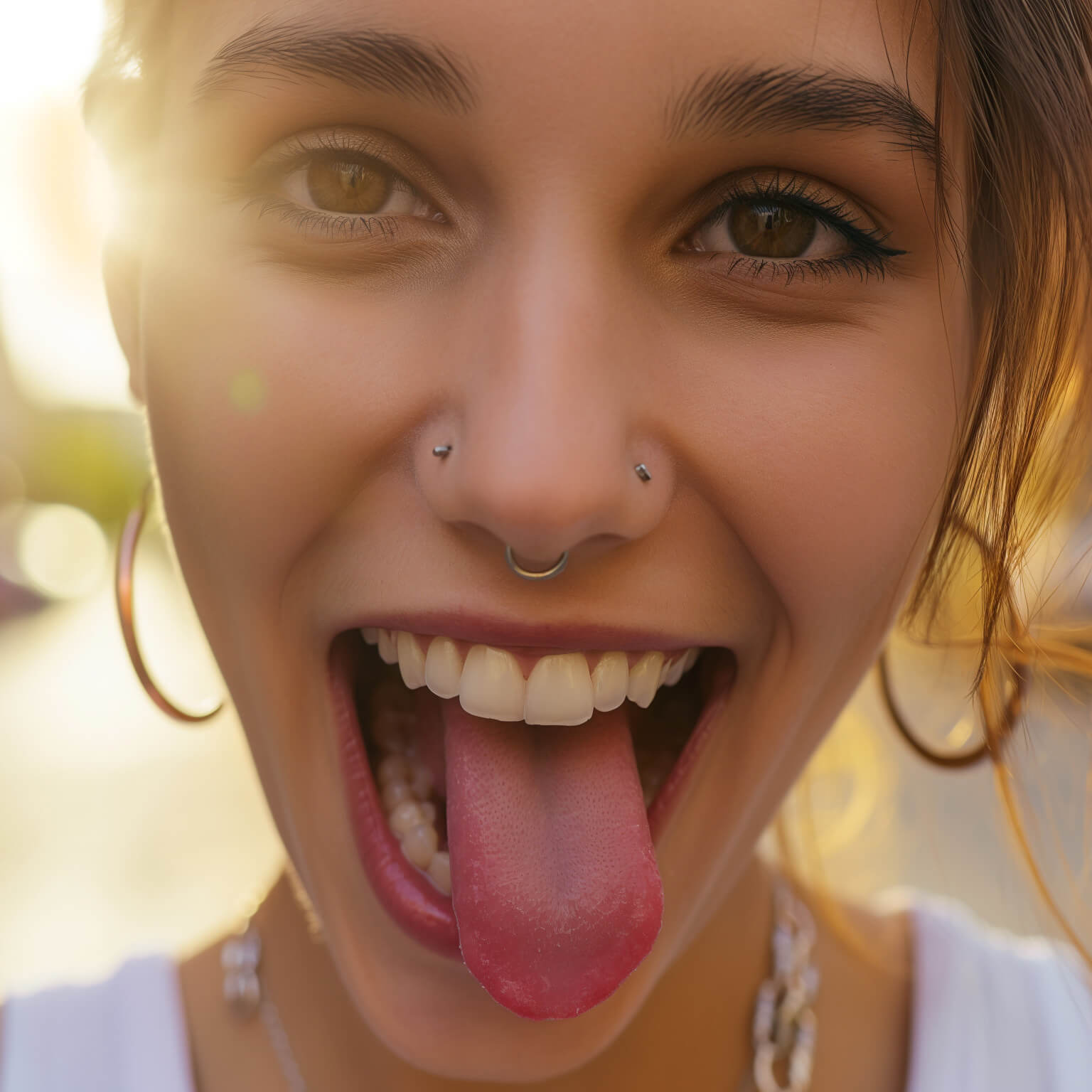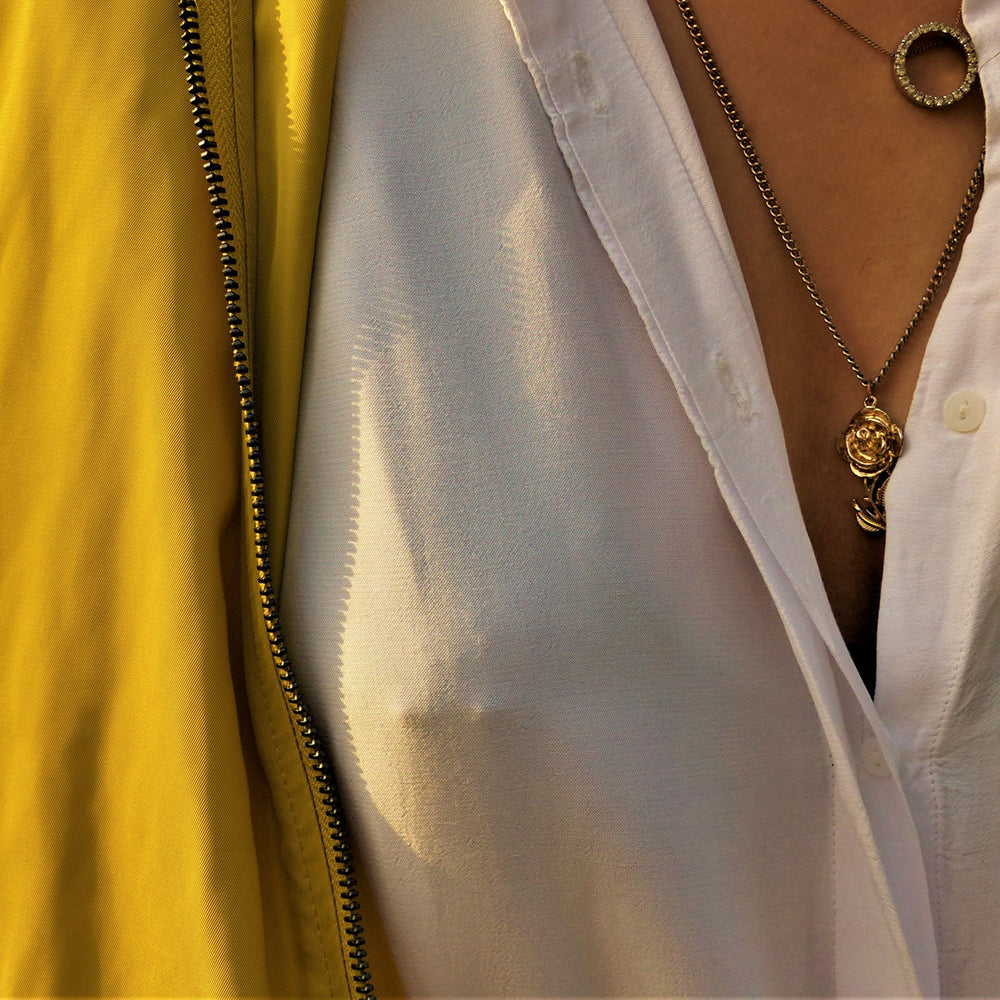Nipple piercings have gained immense popularity over the years, becoming a bold and stylish way to express one's individuality. However, along with the aesthetic appeal comes the responsibility of proper care and healing. If you're considering or have recently gotten a nipple piercing, you're likely wondering, "How long does a nipple piercing take to heal?" In this comprehensive guide, we'll explore the healing time, cleaning tips, soreness after piercing, and aftercare guidelines to ensure a smooth and speedy recovery.
HEALING TIME: HOW LONG DOES A NIPPLE PIERCING TAKE TO HEAL?
The healing time for a nipple piercing can vary from person to person, depending on several factors. On average, a nipple piercing can take anywhere from 6 to 12 months to fully heal. However, it's important to note that you can experience some changes along the way.
- Initial Healing: During the first few weeks, your nipple piercing may appear red, swollen, and tender. This is perfectly normal and part of the initial healing process. You may also notice a clear or slightly yellow discharge, which is a sign of your body's natural healing response.
- Months 1-3: As the weeks pass, the soreness should gradually subside, and the redness and swelling should decrease. However, it's essential to continue proper aftercare during this time to prevent complications.
- Months 3-6: By this stage, you should notice a significant reduction in discomfort and irritation. Your nipple piercing will start to stabilize, and the healing process will continue underneath the surface. It's crucial to avoid any unnecessary movement or friction during this phase to prevent setbacks.
- Months 6-12: The final phase of healing can take up to a year or more. While you may feel that your nipple piercing has healed externally, the internal tissue is still strengthening. It's essential to remain diligent with aftercare to ensure a successful and complete healing process.
FACTORS AFFECTING HEALING TIME
- Individual healing ability: Everyone's body heals at a different rate.
- Piercing technique: A professional piercing studio using proper techniques can reduce complications.
- Aftercare: Strict adherence to aftercare instructions can significantly impact healing time.
- Jewellery quality: High-quality jewellery reduces the risk of irritation and infection.
CLEANING TIPS: HOW TO CLEAN A NIPPLE PIERCING
Proper cleaning is crucial in ensuring a nipple piercing heals without complications. Here's a step-by-step guide on how to clean your nipple piercing:
Use an isotonic saline spray: Isotonic saline spray is a convenient and effective option for cleaning your nipple piercing. You can find isotonic saline sprays at your local pharmacy. Ensure the spray is at a comfortable room temperature.
Apply the isotonic saline spray to your nipple piercing, following the product's instructions. It's a simple and hygienic way to keep the area clean and promote healing.
Allow the saline solution to work for a moment, and then gently pat the area dry with a clean, disposable paper towel.
Avoid touching or twisting the jewellery: It's crucial to refrain from touching your nipple piercing with dirty hands or twisting the jewellery, as this can introduce bacteria and slow down the healing process.
Use a sterile, breathable adhesive island dressing: To prevent snagging on clothing, rubbing on undergarments, or coming into contact with cloth fibers, consider applying a sterile, breathable adhesive island dressing over your nipple piercing. This dressing can provide an extra layer of protection and reduce irritation.
Repeat this cleaning process twice a day, ideally in the morning and before bedtime.
Isotonic saline spray is a trusted choice for wound care, as it closely matches the body's natural salt balance. Ensuring that you avoid touching or twisting the jewellery and considering the use of a sterile adhesive dressing can further promote a smooth healing process for your nipple piercing. Avoid using harsh chemicals, alcohol, hydrogen peroxide, or ointments on your nipple piercing, as these can delay the healing process and irritate the skin.
SORENESS AFTER PIERCING: HOW LONG WILL MY NIPPLES BE SORE?
After getting a nipple piercing, it's normal to experience soreness and discomfort for a period of time. The duration of soreness can vary from person to person, but it typically lasts for the first few weeks to months.
During the initial healing stages (first few weeks):
- You may experience tenderness, swelling, and redness around the piercing site.
- Soreness can be more pronounced during activities that involve chest movement, such as running or vigorous exercise.
- The soreness should gradually decrease as your body adapts to the piercing and the healing process progresses.
If your nipples remain sore for an extended period or become increasingly painful, it's essential to consult with a professional piercer or a healthcare provider. Persistent soreness or unusual symptoms could be signs of an infection or other complications that require prompt attention.
AFTERCARE GUIDE: HOW TO CARE FOR NIPPLE PIERCING
To expedite the healing process and reduce the risk of complications, follow these aftercare guidelines:
- Avoid touching your nipple piercing with dirty hands, and never twist or rotate the jewellery.
- Wear loose-fitting, breathable clothing to minimize friction and irritation.
- Refrain from swimming in pools, hot tubs, or bodies of water during the initial healing period to avoid exposing your piercing to bacteria and irritants.
- Be cautious with activities that involve direct contact or pressure on your nipples, such as sleeping on your stomach or participating in contact sports. Protect your piercings as necessary.
- Refrain from engaging in sexual activities that involve nipple stimulation until your piercing has fully healed to prevent infection or irritation.
- Maintain a balanced diet and stay hydrated to support your body's natural healing process.
- Avoid using any products, such as creams or lotions, that may come into contact with your piercing unless recommended by a professional piercer.
- Keep an eye out for any signs of infection, such as increased redness, swelling, pus discharge, or a fever. If you notice any of these symptoms, seek medical attention promptly.
- Continue with your saline solution cleaning routine until your piercing is fully healed.
CONCLUSION
In conclusion, the healing time for a nipple piercing varies, but on average, it can take anywhere from 6 to 12 months. Proper aftercare, including regular cleaning with a saline solution and avoiding potential irritants, is essential for a smooth healing process. While soreness is normal initially, any persistent or worsening discomfort should prompt a visit to a professional piercer or healthcare provider. Remember that patience and diligence in caring for your nipple piercing will result in a beautifully healed and well-maintained adornment.

PIERCING AFTERCARE
Create your business account today, and gain access to our exclusive piercing aftercare products.
DISCLAIMER: THIS ARTICLE DOES NOT CONTAIN ANY FORM OF MEDICAL ADVICE
The content of this of this article, including but not limited to text, graphics, images, and other materials, is strictly for informational purposes. Nothing on this article is meant to be a replacement for medical advice, diagnosis, or treatment from a medical professional.
Before beginning a new health care regimen or with any questions you may have about a medical condition or treatment, always consult a medical expert first.
Never disregard medical advice or put off consulting a medical professional because of something you have seen or read on this page.



